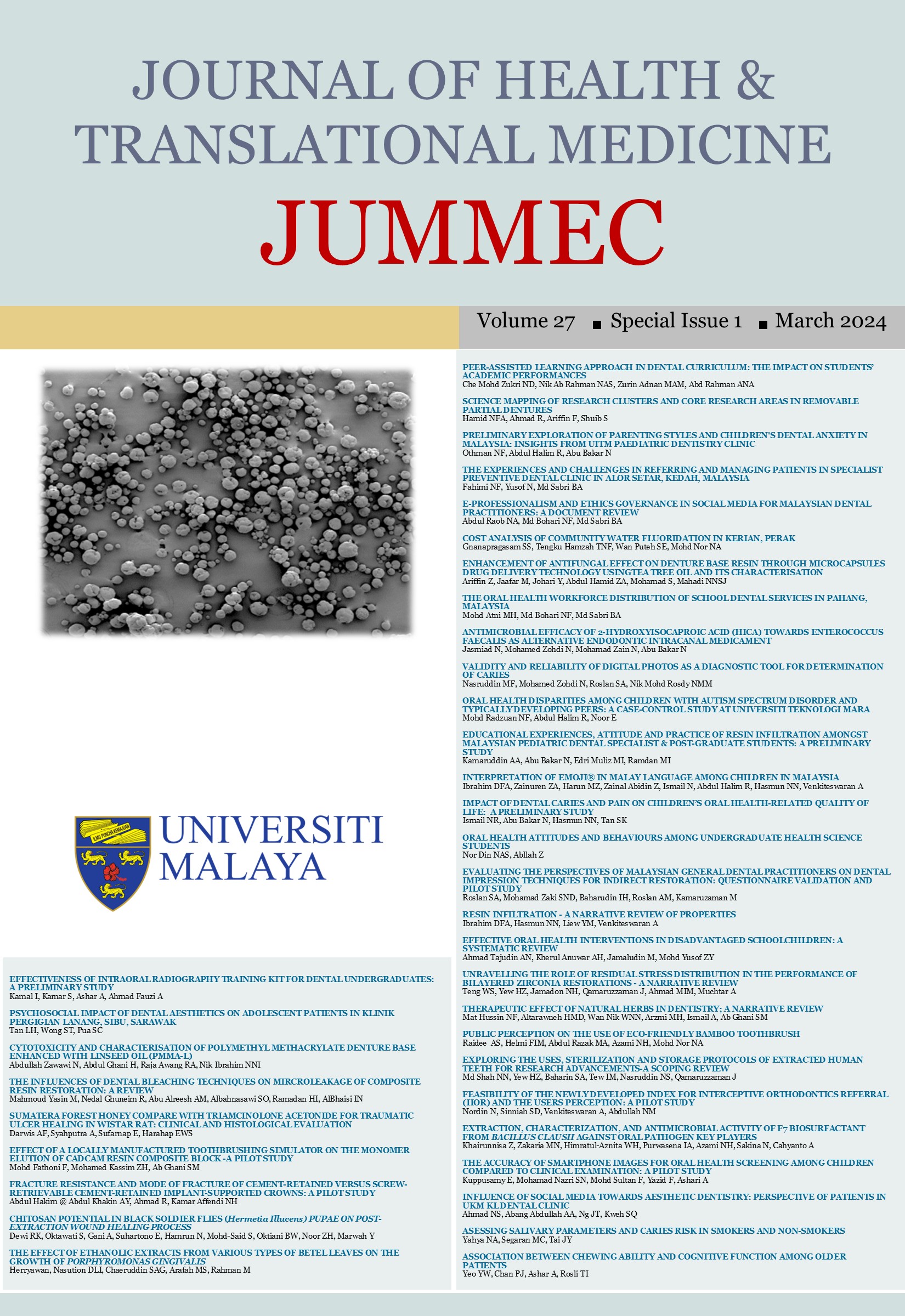EFFECT OF A LOCALLY MANUFACTURED TOOTHBRUSHING SIMULATOR ON THE MONOMER ELUTION OF CAD/CAM RESIN COMPOSITE BLOCK - A PILOT STUDY
Received 2024-03-01; Accepted 2024-03-29; Published 2024-03-29
DOI:
https://doi.org/10.22452/jummec.sp2024no1.34Abstract
Objective: This pilot study aimed to calibrate the high-performance liquid chromatography (HPLC) protocol for detection and quantification of monomer that may be eluted from a computer-aided design and computer-aided manufacturing (CAD/CAM) resin composite block (RCB) when subjected to an abrasion test with a toothbrushing simulator.
Materials and methods: CAD/CAM RCB (Shofu Block HC) were sectioned and randomly allocated into two groups made up of Control group (CT) group (n = 4), and Toothbrush Abrasion (TA) group (n = 4). CT group was subjected to no surface treatment and TA group was subjected to a toothbrushing wear test following immersion of both groups in artificial saliva for 7 days. High Performance Liquid Chromatography (HPLC) was used to separate and identify urethane dimethacrylate (UDMA) and triethylene glycol dimethacrylate (TEGDMA) that were eluted from the slurry produced following the toothbrushing abrasion test of the TA group and from storage solution of artificial saliva of the CT group.
Results: After the toothbrush wear test, 6.192 to 16.937 ng/µL of UDMA eluted from the TA group and no UDMA was detected in the CT group. TEGDMA was not detected from both the CT and TA groups.
Conclusion and clinical significance: The HPLC protocol has been calibrated and toothbrushing wear resulted in detectable UDMA released from Shofu HC Block at a level that is not harmful to the patient.
Downloads
Downloads
Published
Issue
Section
License
All authors agree that the article, if editorially accepted for publication, shall be licensed under the Creative Commons Attribution License 4.0 to allow others to freely access, copy and use research provided the author is correctly attributed, unless otherwise stated. All articles are available online without charge or other barriers to access. However, anyone wishing to reproduce large quantities of an article (250+) should inform the publisher. Any opinion expressed in the articles are those of the authors and do not reflect that of the University of Malaya, 50603 Kuala Lumpur, Malaysia.


